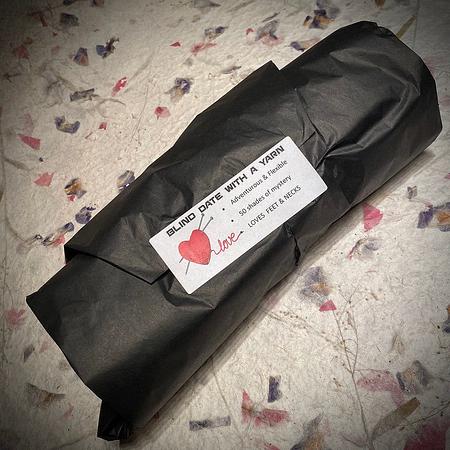
it is always exciting to introduce something new, something that I’ve never offered before. Today is exciting! I usually am drawn to, what some may call “weird” combinations of fibres together, like agave with sheep and angora, or even stainless steel and animal fibres, but this time, I was drawn to one breed with a multitude of colour variations.
Combining various colour variations within one top can be challenging, but not if you prepare all the coloured fleeces seperately and then “gill” them together. The process of gilling the fibres happens after all the fibres have been carded and processed into rovings and then those are combined into a top by gently combining them together.
Most of the IxCHeL blends are gilled up 6 or more times, resulting in all the different fibres blending into one another; the more you bill, the more everything is mixed. Not this time! This time three different colours (black/brown, fawn and white) we’re only gilled once! That means you can easily distinguish the three colours in the top. That means that when you dye the top, various tonal values are introduced you wouldn’t have if the top was pure white. I absolutely looove that play on colour and it will make your yarn look absolutely fantastic!
Now, what are Corriedale sheep?

The Corriedale’s story starts in 1865, when James Little of Scotland sailed with his family halfway across the world to start his new life as manager and shepherd of Dr. George Webster’s flocks in New Zealand. Romney sheep purchased by Dr. Webster accompanied the passengers of that ship. According to some accounts, the ship took on too much water during a storm in the Bay of Biscay and the crew had to seriously consider getting rid of the sheep to lighten the ship. Fortunately for the sheep that did not happen, and James Little managed to safely arrive at the Corriedale and Balruddery sheep stations in north Otago, New Zealand with both his family and Dr. Webster’s Romney sheep in good health.
Little arrived in New Zealand as an experienced shepherd. For much of his life he had been tending sheep in the hills and dales in and around Peeblesshire, Scotland. He would have been familiar with the practice of crossbreeding sheep to develop new breeds; by the early 1800s sheep breeding for various traits had become almost ubiquitous among gentlemen farmers. Although less-wealthy shepherds in the British Isles may not have necessarily had the means to indulge in breeding experimentation, many would certainly have been aware of the popular science and logic behind it. However, with shepherds as a group during this period being a relatively conservative lot, not all were onboard with the idea of actively breeding for specific traits. Many just wanted to raise sheep the way they always had – with the established breeds that were typical for their regions, with no wish to change what was already working just fine.
Little had never encountered Romney sheep before working for Dr. Webster, but he considered himself to be a good judge of sheep, having been around them for much of his life. It did not take him long to determine that the Romneys were not doing as well as could be hoped. The Corriedale and Balruddery sheep stations were located in a part of New Zealand that was much more arid than that of the Romney’s native England, and land was full of patchy, native grasses – much different than the English grasses that the Romneys were used to. James Little, aware of how new breeds of sheep were being developed in the British Isles, had the idea to cross Merino sheep with Dr. Websters Romneys in order to create a hardier breed adapted for the region. Other shepherds in the area ridiculed the idea that new breed of sheep suitable for the area could be bred from Merinos and Romneys, and they predicted that the half-breeds would not be able to reliably maintain their characteristics from one generation to the next. Dr. Webster took a risk to his reputation and livestock by allowing Little to experiment, but by doing so proved the naysayers wrong – the resulting sheep ended up winning prizes and commanded a good price at market. Little carried this sense of accomplishment and the idea of creating new breed with him as he started his own sheep farm in the late 1870s.
It was after Little began to farm his own sheep that Corriedale sheep truly came to fruition. When Dr. Webster died, many of his sheep were sold to various farmers. However, Little was able to purchase Dr. Webster’s Lincoln flock. He took this Lincoln flock along with some Merinos that he purchased and continued his breeding experiments. Little was convinced that New Zealand needed its own breed of sheep that combined Merinos with a longwool breed, and he was likewise convinced that he was the man for the job.
Little was an interesting mix of breeding knowledge and superstition. While he had confidence in the science behind crossing breeds of sheep, he also had some curious ideas about how black livestock came to be. He firmly believed that black livestock, and black sheep in particular, were a result of pregnant ewes being exposed to the color black. As proof, he writes in his memoirs about how his and his father’s black dogs’ presence around ewes caused them to throw black lambs. Then he goes on to describe describes how a cattle operation known for its black cattle also required their employees to wear black. The link, to James Little, was clear. Too much exposure to black was the cause of black livestock.
His odd beliefs about the origins of black sheep didn’t stop him from eventually achieving success. Choosing to name his new breed of sheep after the Corriedale sheep station where he got his professional start, he committed to breeding his idea of the perfect sheep for New Zealand. Progress was slow at first, and Little still had to put up with a fair amount ridicule about his idea. A. W. Rutherford, well-known as a successful sheep farmer, wrote about the benefits of various breeds of sheep in New Zealand in an 1898 article for the Weekly Press. However, he chose to skip over the nascent Corriedale entirely with the eye-rolling comment, “Out of respect for the feelings of my old friend Mr. Little, I decline to take his beloved Corriedale seriously and so will pass them without comment.” However, within nine years public opinion would change. Little and his Corriedales, as well as other farmers who began raising Corriedales, were winning sheep competitions and producing both good wool and sizeable carcasses for meat. By 1907 A. W. Rutherford had changed his tune, stating that in new article that there was an increasing tendency for farmers to replace their Merinos with Corriedale.
The New Zealand Sheep Breeders’ Association took note the Corriedale’s popularity as well. By 1900 they added Corriedales, then known as inbred halfbred sheep, to an appendix in their Flock Book and began to debate what to call them. It turns out that although Little was possibly the best-known breeder and most outspoken as well, others had been experimenting with the same Merino/Lincoln mix. In the slim volume that makes up Little’s memoirs, appropriately titled The Story of the Corriedale, it is clear that it was quite a dramatic moment for him. Little was convinced that the idea of the breed had begun with him, and as such the sheep should be named Corriedale to reflect that. However, another representative from Otago suggested the sheep should instead be named Southern Cross. Little seems to have taken this personally, and notes with great satisfaction in his memoir that in fact the Association decided to name the breed Corriedale. In 1910, Corriedale breeders started their own association, and by 1916 the New Zealand Sheep Breeders’ Association allowed the Corriedale to move from the Flock Book’s appendix to the main book. By 1924, the Corriedale Sheep Society in New Zealand released their first flock book.
Newspapers and other publications soon began proudly referring to the Corriedale as “New Zealand’s Own Sheep,” and gave James Little much of the credit for development of the breed. Interestingly, it is also possible to find articles claiming that Australians developed the same breed concurrently. This would probably not be too odd of an occurrence – Merinos and Lincolns were easy to find in Australia during the same period, and it would not have been unusual to find farmers in Australia willing to experiment as well. The Corriedale breed was established by Corbett in Victoria in 1882, and MacKinnon in Tasmania in 1888 and was officially recognised in 1922.

Corriedales soon took off in popularity, not just in New Zealand, but around the world. James Little and others had successfully bred a sheep that was an ideal dual-breed, producing both quantities of wool and having a large carcass that produced good amounts of meat. The timing of the Corriedale’s development was especially fortuitous with WWI and WWII on the horizon. While many traditional breeds of sheep that could not produce larger quantities of wool and meat fell by the wayside during these decades, the Corriedale and its high productivity found nearly unmitigated success. The breed spread around the world, and today is just behind Merino as one of the most popular breeds in the world among sheep farmers.

Corriedale wool is very popular in the spinning, felting and knitting world too: It is a medium fiber with a width of around 25-30 microns, with a relatively good staple length of 7cm - 12cm.
It has a very well-defined crimp, and while difficult to spin very fine, it makes a wonderfully bouncy sock weight yarn, DK or heavier weight yarn. While felters love it for its ability to easily felt, knitters, weavers and crocheters will love it for its grippy-ness; fair-isle colourwork and weaving done with Corriedale won’t slip or become loose.
More colourways will be added soon but if you have any special requests: please contact me anytime! Heres the link to this weeks new blend update: https://ixchel.com.au/products/corriedale
Before I forget a very important event: The Tour de France is starting tomorrow night at 8pm AEST, which means it is TOUR DE FLEECE TIME!
There is still time to sign up for Team IxCHeL tonight until July 1st when the Tour de France starts!
There are no requirements other than having fun, sharing your spinning photos and spinning IxCHeL fibres…easy peasy! There is a prize to be won at the end though! A super prize pack of over $100 of IxCHeL fluffiness and maybe even a spindle !
All you need to so is sign up by emailing me at hop@ixchel.com.au , before July 1st and you will receive an email from me with all the details and your discount code! Yes, you will receive a discount code for all your fibre purchases during the tour de fleece! How good is that!!!!?
Have a fabulous weekend and happy, hoppy spinning !
As my favourite Doctor Who used to say “Allons-y!” (Let’s go!)
big hugs
Charly









































